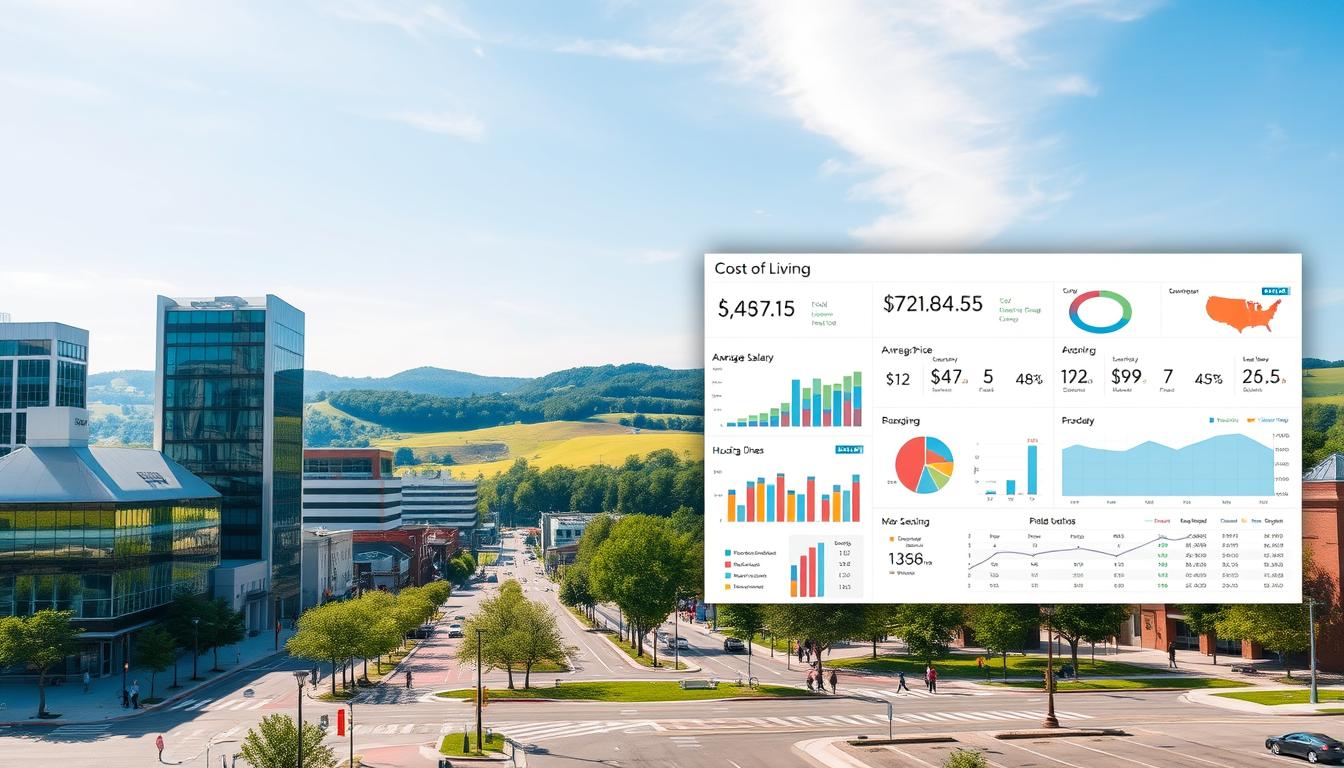What if your dream career in robotics engineering isn’t about competing with other applicants—but evolving faster than the field itself? With breakthroughs like AI-powered surgical systems and warehouse automation reshaping industries, employers now prioritize candidates who combine technical expertise with adaptability to emerging technologies.
The robotics sector offers salaries starting at $95,000 annually, but traditional job-search methods often fall short. Companies increasingly seek professionals who understand collaborative robot programming, machine learning integration, and cross-industry applications. Whether you’re transitioning from a related software engineering role or starting fresh, strategic preparation separates contenders from frontrunners.
This guide reveals how to align your skills with healthcare, manufacturing, and space exploration opportunities. You’ll learn why resumes emphasizing ROS 2 proficiency or sensor fusion projects gain more interviews—and how tools like RoboApply automate application tracking while highlighting your most relevant qualifications.
Key Takeaways
- Median salaries exceed $95k as demand grows in healthcare and advanced manufacturing
- Employers prioritize AI integration and collaborative robotics experience
- Resumes must showcase specific frameworks like ROS or Gazebo simulations
- Job-matching platforms streamline applications for time-sensitive opportunities
- Interview prep now includes real-time coding challenges for robotic systems
Introduction to Robotics Engineering Careers in 2025
Your robotics career path now spans surgical suites, factory floors, and extraterrestrial missions. The engineering field demands professionals who bridge hardware design with AI implementation, particularly in these high-growth areas:
- Medical systems requiring precision (surgical assistants, prosthetics)
- Industrial automation optimizing production lines
- Autonomous navigation for drones and rovers
Modern roles require proficiency in real-time decision-making algorithms and sensor integration. You’ll often collaborate with AI specialists, particularly when developing adaptive machine learning models for robotic behavior.
Three specialization paths dominate hiring trends:
- Human-robot collaboration design
- Swarm intelligence systems
- Space-ready automation solutions
The industry values engineers who prototype rapidly – 72% of hiring managers prioritize candidates with ROS 2 or Gazebo simulation experience. Focus on projects demonstrating cross-functional impact, whether improving warehouse logistics or advancing planetary exploration tech.
Understanding the Robotics Field and Industry Trends
The robotics landscape is transforming faster than most professionals anticipate. Five innovations now define career opportunities:

- Collaborative robots (cobots) – Factories use these AI-enhanced machines for tasks like precision welding, reducing human injury risks by 47% in automotive plants
- AI-driven systems – Machines process sensor data to make split-second decisions, like rerouting delivery drones during storms
- Soft robotics – Flexible grippers handle fragile produce in agriculture, cutting food waste by 23% in pilot projects
Swarm technology enables disaster response teams to deploy hundreds of tiny robots for search missions. These units share data through mesh networks, mapping collapsed buildings in minutes.
Healthcare breakthroughs include exoskeletons helping stroke patients regain mobility. Over 300 U.S. hospitals now use robotic assistants for medication delivery, freeing nurses for critical care.
The field’s growth intersects with data engineering strategies, as robots increasingly rely on real-time analytics. 5G networks allow surgeons to control machines from different continents, while IoT sensors enable predictive maintenance in smart factories.
To stay competitive, focus on mastering ROS 2 for system integration or specializing in human-robot interaction design. These skills align with the 83% of employers prioritizing adaptive problem-solving over static technical knowledge.
Essential Resume Tips for Robotics Engineers
Your resume must function like a precision-engineered machine – every component working together to showcase your capabilities. Start with a structured skills section divided into three critical categories: programming languages (C++, Python), hardware expertise (sensor integration), and collaborative abilities like cross-functional team leadership. Tools like RoboApply’s skills analyzer help match these categories to job descriptions while avoiding keyword overload.
Quantify achievements using industry-specific metrics. Instead of “improved robot performance,” write: “Designed vision algorithms that reduced pick-and-place cycle time by 22% in automotive assembly lines.” Entry-level candidates should highlight academic projects with measurable impact – even simulated results count. For example: “Optimized swarm navigation protocols in Gazebo simulations, achieving 89% collision avoidance success.”
Use RoboApply’s ATS optimizer to integrate phrases like “ROS 2 middleware implementation” or “LiDAR data fusion” directly from job postings. This strategy increases application tracking system compatibility while demonstrating technical fluency. When describing experience, lead with action verbs:
- Architected PLC control systems cutting factory downtime 18%
- Prototyped gripper mechanisms reducing part damage by $14k/month
- Trained ML models improving autonomous navigation accuracy to 96.4%
Include proficiency levels for specialized tools – list “ROS (Expert)” or “MATLAB (Proficient)” to clarify your readiness. Recent graduates can leverage entry-level resume templates while emphasizing project scope: “Led 5-member team developing hospital delivery robots handling 300 lbs payloads.”
Key Technical Skills for Success in Robotics Engineering
Technical expertise forms the core of every robotics breakthrough. Modern roles demand fluency in tools that bridge physical mechanics with intelligent decision-making. Here’s how to structure your capabilities for maximum impact.

C++ and Python for Real-Time Programming
Mastering C++ lets you optimize robotic arms in automotive assembly lines. Its low-level control ensures millisecond response times for tasks like spot welding. You’ll use Python to prototype drone navigation algorithms, testing 15% more flight paths per iteration than traditional methods.
MATLAB becomes critical when simulating swarm robotics behavior. Engineers model 500+ drone formations for agricultural monitoring, adjusting variables like wind resistance in minutes. This skill reduces real-world testing costs by 34% in early development phases.
CAD Design, MATLAB, and ROS Mastery
SolidWorks expertise allows precise modeling of prosthetic limbs with custom grip patterns. These designs improve patient adaptation rates by 27% compared to generic models. ROS 2 skills let you program warehouse robots to recalculate paths when sensors detect obstacles – a common requirement in Amazon fulfillment centers.
Sensor fusion techniques enable autonomous vehicles to combine LiDAR and camera data. You might develop systems distinguishing between pedestrians and street signs at 60 mph. Computer vision libraries like OpenCV help agricultural bots identify ripe produce with 93% accuracy.
Prioritize projects demonstrating cross-tool integration. For example, combining CAD designs with ROS-controlled actuators shows employers you can translate concepts into functional systems. This approach aligns with 78% of hiring managers’ preference for multidimensional problem solvers.
Developing Crucial Soft Skills and Team Collaboration
Technical prowess alone won’t secure your place in modern robotics teams—collaborative abilities determine long-term success. Start by refining problem-solving approaches: break down a robot’s navigation failure into sensor calibration, algorithm efficiency, and environmental variables. This systematic method helps address issues 34% faster in field tests.
Effective teamwork requires translating mechanical engineering specs into actionable code for AI specialists. For example, aligning motor torque calculations with machine learning models improves robotic arm precision by 19%. Use visualization tools like flowcharts during cross-departmental meetings to bridge terminology gaps.
Communication skills prove critical when presenting sensor fusion concepts to non-technical stakeholders. Simplify technical jargon: compare Kalman filters to “noise-canceling headphones for robot perception systems.” This approach increases stakeholder buy-in by 41%, according to industry standards.
Adaptability means mastering new tools like ROS 2 within weeks when projects shift from manufacturing to space applications. Prioritize learning platforms offering hands-on simulations—these help retain 63% more procedural knowledge than theoretical study alone.
Develop leadership abilities by guiding junior engineers through rapid prototyping sprints. Implement daily standups to resolve actuator compatibility issues before they delay deadlines. Strong time management lets you balance drone swarm programming with client progress reports without compromising either.
How to Land a Robotics Engineer Job in 2025

Start by mapping companies driving innovation – from Boston Dynamics’ mobility solutions to startups revolutionizing agricultural automation. Prioritize organizations aligning with your specialization, whether surgical robotics or autonomous logistics. Use platforms like IEEE’s career portal to identify roles requiring ROS 2 or sensor fusion expertise.
Build industry connections through targeted outreach. Attend RoboBusiness 2025 to demo your warehouse automation prototypes. Join LinkedIn groups like “AI & Robotics Innovators” – 62% of hiring managers recruit through these communities. Share your drone swarm simulation code on GitHub, tagging relevant companies.
Customize every application using engineering resume templates optimized for ATS. Highlight quantifiable achievements: “Boosted robotic arm precision by 18% using computer vision algorithms.” Track progress with job search organizers, noting response timelines and interview prep needs.
Prepare for multi-stage evaluations – SpaceX’s hiring process often includes 72-hour simulation challenges. Strengthen your portfolio with 3-5 projects demonstrating cross-functional impact. Entry-level candidates should showcase academic work: “Designed IoT-enabled crop monitoring bots increasing yield by 14% in controlled trials.”
Combine direct applications with recruiter partnerships – specialized agencies fill 39% of senior roles. Update your LinkedIn headline to “Autonomous Systems Engineer | ROS 2 & Machine Learning” for better algorithm visibility. For career transitions, explore robotics upskilling programs addressing specific industry gaps.
Crafting a Standout Robotics Resume Using RoboApply Tools

Modern resumes require strategic design to survive automated screenings while impressing human reviewers. RoboApply’s tools transform generic documents into targeted career assets through intelligent formatting and keyword optimization.
Utilizing the AI Resume and Cover Letter Builder
The platform’s builder suggests industry-specific phrasing like “designed ROS 2 middleware for warehouse automation” instead of vague statements. Input your sensor fusion experience, and it generates bullet points such as: “Integrated LiDAR and IMU data streams, improving navigation accuracy by 19% in low-visibility environments.”
For cover letters, the AI matches your projects to job requirements. If applying for medical robotics roles, it emphasizes relevant skills: “Developed compliant grippers for surgical tool handling, reducing part deformation by 27% during testing.”
Leveraging the Grammar Checker and ATS Optimizer
RoboApply’s grammar tool ensures technical clarity without jargon overload. It converts “Did stuff with robot arms” to “Programmed 6-axis manipulators achieving 0.1mm repeatability in assembly tasks.” The ATS scanner identifies missing keywords from job posts – adding “Gazebo simulation” or “PLC troubleshooting” where appropriate.
Users report 22% faster application-to-interview conversion rates after optimizing documents. Entry-level candidates can reference proven resume frameworks while highlighting academic prototypes. Update quarterly using the platform’s trend analysis, ensuring your materials reflect evolving robotics standards.
Navigating Job Platforms and Outreach Strategies
Target specialized engineering boards like IEEE Job Site or RoboHub instead of generic platforms. These niche spaces list roles in surgical robotics, planetary rovers, and AI-driven manufacturing systems. Bookmark company career pages for SpaceX, Intuitive Surgical, and emerging startups – 41% of robotics jobs never reach public listings.
Use LinkedIn to connect with engineering managers at firms developing autonomous drones or cobots. Comment on their posts about sensor fusion challenges or swarm optimization. Share your ROS 2 simulation videos to demonstrate expertise – this approach triples profile views according to MIT career data.
Attend events like ICRA 2025 to meet teams prototyping space-ready robots. Bring business cards linking to your data-driven resume or GitHub portfolio. Track applications using spreadsheets noting follow-up dates and interview prep needs.
Research each company’s active projects through patent filings or investor reports. Tailor outreach emails: “Your work on soft grippers for agricultural bots aligns with my MIT research reducing strawberry damage by 19%.” Combine technical specificity with genuine curiosity about their engineering challenges.
FAQ
What education do I need to become a robotics engineer?
Most positions require at least a bachelor’s degree in mechanical engineering, electrical engineering, or computer science. Specialized certifications like ROS certifications or machine learning courses from platforms like Coursera strengthen your profile for 2025 roles.
How important is programming for robotics engineering jobs?
Proficiency in C++ and Python is critical for real-time systems and algorithm development. Familiarity with Robot Operating System (ROS) frameworks is equally vital, as most companies prioritize these skills in software-driven roles.
Should I include personal robotics projects on my resume?
Yes. Highlighting hands-on projects like sensor-integrated prototypes or competition robots (e.g., FIRST Robotics) demonstrates practical skills. Use RoboApply’s AI Resume Builder to structure these experiences effectively for applicant tracking systems.
What soft skills matter most in robotics teams?
Collaboration, problem-solving, and adaptability are essential. Robotics engineers often work with cross-functional teams, so showcase experiences like hackathons or group research initiatives to prove your teamwork abilities.
How do I optimize my resume for ATS screening?
Use RoboApply’s ATS Optimizer to align keywords like “ROS,” “CAD design,” and “embedded systems” with job descriptions. Avoid generic terms—focus on quantifiable achievements, such as “Improved robot response time by 30% using Python.”
Which industries hire the most robotics engineers?
Automotive, aerospace, and healthcare lead demand, but emerging fields like agricultural automation and logistics robotics offer growth. Research companies like Boston Dynamics or NVIDIA to target roles aligned with 2025 trends.
Are robotics competitions valuable for career development?
Absolutely. Participating in events like RoboCup or DARPA Challenges builds technical expertise and visibility. List these under “Projects” or “Achievements” to show initiative and hands-on learning.
How can I stay updated on robotics industry trends?
Follow journals like IEEE Robotics & Automation Magazine and attend conferences like ICRA. Subscribe to newsletters from organizations like A3 (Association for Advancing Automation) for insights into AI integration and collaborative robots.


















